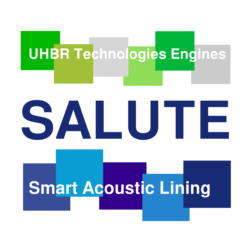Impact
To the preceding section: Technologies
The expected impacts of the projects are manifold
Socio-economic impacts
Studies on noise control are of critical importance for the society. The quality of life of inhabitants and the economic prosperity of countries are extremely dependent on the environmental footprint of human and industrial activities, and acoustic research plays an essential role, aiming at lowering the impact of noise on the population. Environmental noise not only impacts human comfort, it most generally leads to dramatic adverse health issues, ranging from cognitive impairments to more severe cardiovascular diseases. The World Health Organization (WHO) issued a report in 2011 quantifying the healthy years lost every year in Europe, where it is stated that almost 1’000’000 years may be lost due to the consequences of sleep disturbances. Besides, the social costs associated to noise pollution may also be a fair indicator, allowing policy-makers draw the future legislations regarding the preservation of the acoustic environment in Europe. The French Agence De l’Environnement et Maîtrise de l’Energie (ADEME) has recently issued a report, where the social costs of noise in France are estimated to amount 57 billion euros per year, which is higher than those due to tobacco for instance (47,4 billion euros in France in 2014). Among these noise related costs, 20,5 billion euros are due to transportation noise (11,5 billion euros of health costs, and 9 billion euros of real estate depreciation), making it one of the most important environmental costs).
The technological outcomes of the SALUTE project will obviously contribute to achieve the objective targeted by Europe regarding the reduction of noise pollution issued by air transportation, and beyond, by the industry. As planned in CleanSky 2 new technologies are needed to reach the Flightpath 2050 targets of a 75% cut in CO2, a 90% reduction in NOx and a 65% reduction in noise. SALUTE program proposes to impact that goal by paving the way to new adaptive liners for the next generation of aircraft by mastering technologies that can be used in the near future.
Technology Readiness Level
SALUTE impacts are fully in line with the need to propose new technologies in view of developing UHBR while decreasing noise emission. The proposal aims at impacting this target by proposing jump from today TRL 2 systems developed in previous works to TRL 3 in a 2D implementation and TRL 4 in a 3D prototype. The evaluation of this technology at ¼ full-scale will also allow for further engine demonstrators in agreement with the expectation of the CleanSky call.
More than this, SALUTE project will propose a new methodology to compute fully coupled aeroacoustic flows interacting with generalized boundary conditions made of adaptive and distributed active liner. The multiscale and multiphysical aspect of the aero/vibro-acoustic problem will be targeted and efficient numerical tools constitute an important result of the program. It will directly provide a strong added-value to the state of the art and will impact the real liner design process as requested by ITD Leader.
